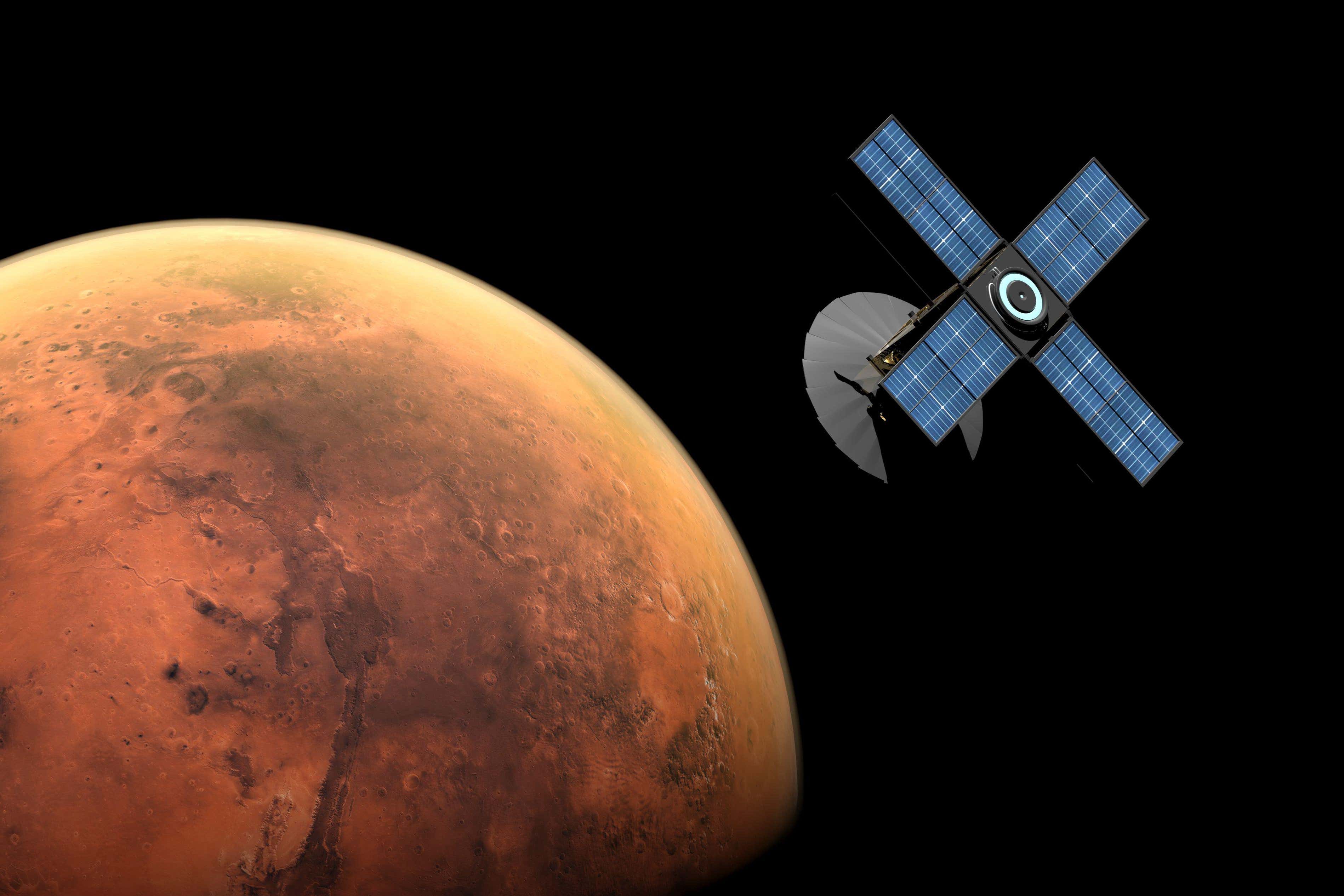Scientists find further evidence of liquid water on Mars
A study provides the first independent line of evidence using data other than radar, that there is liquid water beneath Mars’ south polar ice cap.

Scientists have discovered new evidence suggesting there could be liquid water on Mars.
The study, led by the University of Cambridge, provides the first independent line of evidence using data other than radar, that there is liquid water beneath Mars’ south polar ice cap.
The research team, which included scientists from the University of Sheffield and the Open University, said this “does not necessarily mean that life exists on Mars”.
Liquid water is an essential ingredient for life, although it does not necessarily mean that life exists on Mars
Like Earth, Mars has thick water ice caps at both poles, roughly equivalent in combined volume to the Greenland Ice Sheet.
Earth’s ice sheets are underlain by water-filled channels and even large subglacial lakes, however, those on Mars were until recently thought to be frozen solid all the way to their beds due to the cold Martian climate.
Dr Frances Butcher, second author of the study from the University of Sheffield, said: “This study gives the best indication yet that there is liquid water on Mars today because it means that two of the key pieces of evidence we would look for when searching for subglacial lakes on Earth have now been found on Mars.
“Liquid water is an essential ingredient for life, although it does not necessarily mean that life exists on Mars.
“In order to be liquid at such cold temperatures, the water beneath the south pole might need to be really salty, which would make it difficult for any microbial life to inhabit it.
“However, it does give hope that there were more habitable environments in the past when the climate was less unforgiving.”
The combination of the new topographic evidence, our computer model results and the radar data make it much more likely that at least one area of subglacial liquid water exists on Mars today
The international research team, which also included scientists from the University of Nantes and University College Dublin, used spacecraft laser-altimeter measurements of the shape of the upper surface of the ice cap to identify subtle patterns in its height.
They then showed that these patterns match computer model predictions for how a body of water beneath the ice cap would affect the surface.
Their results, reported in the journal Nature Astronomy, agree with earlier ice-penetrating radar measurements that were originally interpreted to show a potential area of liquid water beneath the ice.
Professor Neil Arnold, from Cambridge’s Scott Polar Research Institute, who led the research, said: “The combination of the new topographic evidence, our computer model results and the radar data make it much more likely that at least one area of subglacial liquid water exists on Mars today, and that Mars must still be geothermally active in order to keep the water beneath the ice cap liquid.”